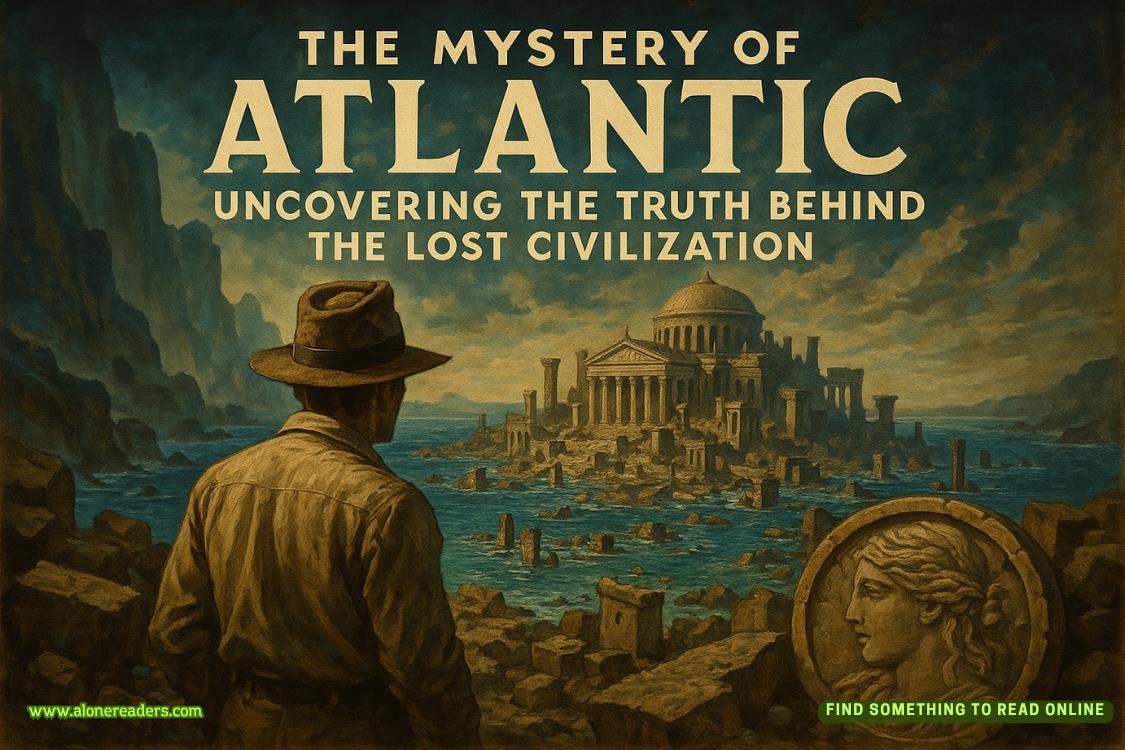Page 21 of Finding Love in the Clouds
“I only get emotional about important stuff. Being so vividly reminded of Christ’s sacrifice, yes, that stirs up emotions. It is amazing to me how this city is such a mixture of cultures. A few blocks away, you have statues idolizing the mythical creatures of the sea, and here you have a beautiful tribute to Christ’s sacrifice.”
“Well, the Castel Sant Angelo right in front of us was built as a mausoleum for emperors and then used as a fortress for popes. Seems like everything here had multiple uses over the centuries, depending on who was in power. It’s nine. Let’s get inside and look around before we head back to the hotel. It won’t do us any favors to be tardy to our first tour meeting. Besides, I think the Vatican City will be much more interesting than this papal residence.”
They each took a wireless earbud, and Fernando turned on the self-guided audio tour that came with the tickets he purchased. Thirty minutes wasn’t enough time to soak everything in, but they were able to get a general overview of Castel Sant’ Angelo and its nearly two centuries of history, from the executions during the Roman Inquisition and the Imperial family laid to rest there to the luxurious papal residence. The air was cool and musty, carrying the scent of aged stone and earth. They quickly explored the castle’s labyrinth of corridors and historic rooms, marveling at the intricate architecture and ornate decorations. From the top of the castle, they enjoyed breathtaking views of Rome and the Tiber River. Before they knew it, Sophie’s 9:30 am alarm was announcing it was time to head back to the heart of Rome and their tour guide.
If the first twenty-four hours were any indication, this was going to be a whirlwind of a European tour.
Chapter Twenty
They arrived at the hotel just in time as the other guests on the tour started to load into a sleek, black van parked outside. They quickly returned their bikes and joined the group.
“Good morning, Fernando, Sophie,” Alicia, the tour director, greeted them warmly as she approached. Alicia was a petite woman in her mid-forties with perfectly styled blond hair, a well-tailored bright red suit with matching pointy-toed high heels, and a contagious air of enthusiasm. “I hope you’re ready for an amazing day.”
Stepping up to the van, the driver, a friendly man named Alessandro, held out his hand to assist Sophie with the step and closed the door behind them after they settled into the comfortable seats. The van hummed to life, and they began their short journey to the Vatican City.
As they drove through the bustling streets of Rome, Alicia provided a brief overview of their itinerary. “We’ll start with a visit to St. Peter’s Basilica, one of the largest and most renowned churches in the world. Then, we’ll head to the Vatican Museums, which housean incredible collection of art and historical artifacts. Finally, we’ll visit the Sistine Chapel, famous for Michelangelo’s stunning ceiling frescoes.”
Soon, they arrived at Vatican City and disembarked near St. Peter’s Square. The square was already bustling with tourists and pilgrims, all eager to experience the Vatican’s spiritual and cultural treasures.
“Welcome to Vatican City,” Alicia said, spreading her arms wide as if to encompass the entire area. “This is the smallest independent state in the world, both in terms of area and population. It’s the spiritual and administrative center of the Roman Catholic Church.”
They made their way to St. Peter’s Basilica, passing through the security checks and into the vast, open square. The basilica’s magnificent façade loomed ahead, its grandeur almost overwhelming.
“St. Peter’s Basilica was designed by some of the greatest Renaissance architects, including Michelangelo, who designed the iconic dome,” Alicia explained. “It’s believed to be the burial site of Saint Peter, one of Jesus’s apostles and the first pope.”
As Fernando and Sophie stepped inside St. Peter’s Basilica, they were immediately struck by its majestic splendor. The soaring dome, designed by Michelangelo, loomed overhead, adorned with mosaics that depicted heavenly scenes with Christ and the saints. Sunlight streamed through the windows, casting a golden glow on the intricate marble floors and the grand bronze altar beneath Bernini’s towering baldachin. The baldachin itself was a canopy constructed of bronze as tall as an apartment building and intricately decorated with branches, cherubs, dolphins, grotesque faces, papal coats of arms, and an ornate gilded cross. Its place at the center of the church’s crossing marked the location of Saint Peter’s tomb and stood over the high altar. The basilica’s walls were lined with more domed alcoves, vibrant mosaics, and frescoes, illustrating biblical stories and the lives of saints. Everywherethey looked, there was a breathtaking combination of artistry and spiritual devotion, from the sculpted cherubs to the detailed reliefs. The air was filled with the faint scent of incense, enhancing the sense of awe and reverence that permeated this sacred space.
Alicia led them to the Pietà, Michelangelo’s famous sculpture of Mary holding the body of Jesus. “This masterpiece was created when Michelangelo was just 24 years old,” she explained. “It’s the only work he ever signed.” The marble figures were so finely crafted that the veins in Jesus’s arm and the sorrow in Mary’s face were almost palpable.
Sophie’s heart broke as she studied the sculpture, and Fernando instinctively released her hand and placed a comforting arm around her shoulder.
“I can’t imagine what she went through that day. Every injury and tear a child endures hurts a mother’s heart, but to know your child is being tortured and killed in such a way…” She wiped the tears that had escaped her lashes and took a deep breath.
“Or, imagine the added weight he carried knowing what was coming and what his mother was going to feel. The Bible says he was fully man and fully God and experienced everything we may feel. He knew that his actions were going to rip her heart out, and yet he had to go through with it anyway. I think we often focus on the pain from the torture, which is no small thing, but the emotional pain he was experiencing that day, too. It puts a whole new perspective on unconditional love, doesn’t it,” Fernando added.
After a few more minutes considering The Pietà, Sophie turned into Fernando and allowed him to hold her until she regained her composure and felt prepared to continue the tour.
Fernando’s heart raced as he held her close to his chest, resting his cheek on the top of her head, his arms wrapped protectively around her. She felt things so deeply, much as he did,but this trip was impacting her on a much more significant level. He wanted to protect her from the pain she was experiencing but was also in awe of her ability and willingness to express it openly. In that moment he felt his heart open in a way he didn’t think was possible. She trusted him and turned to him for comfort. He had never felt so honored and… manly in his life. He liked this new side of their relationship and wanted it to continue.
After exploring the basilica, they walked towards the Vatican Museums. Alicia handed them their tickets, and they joined the queue to enter. “The Vatican Museums were founded by Pope Julius II in the early 16th century,” she explained. “Today, they’re home to one of the most extensive and impressive art collections in the world.”
Inside the museums, they followed Alicia through a labyrinth of galleries and halls, each filled with priceless works of art. They paused to admire the Gallery of Maps, a long corridor lined with detailed maps of Italy painted in the 16th century. The maps’ vibrant colors and intricate details were mesmerizing, showcasing the geographical knowledge and artistic talent of the time.
“One of the highlights of the Vatican Museums is the Raphael Rooms,” Alicia said as they entered a suite of rooms adorned with frescoes by the Renaissance master Raphael. “These rooms were the private apartments of Pope Julius II, and the frescoes depict various religious and historical scenes.”
Fernando and Sophie stood in awe before The School of Athens, a fresco depicting famous philosophers and scientists of the classical world. Raphael himself was included in the scene, adding a personal touch to the masterpiece. The figures in the fresco were arranged in dynamic poses, engaging in animated discussion, and the architectural setting added a sense of grandeur and depth.
As they moved from room to room, Alicia shared fascinating insights about the art and artifacts they encountered. Sophie was particularly captivated by the Gallery of Tapestries, with its intricately woven scenes that seemed to come to life. The tapestries depicted biblical stories with such detail and color that they rivaled the paintings and frescoes in their beauty and impact.
“Can you believe these tapestries are over 500 years old?” Sophie whispered, leaning into Fernando’s side so her voice wouldn’t carry too far.
“It’s kind of crazy to think about. I have sweaters that are only ten years old and almost threadbare. I wonder how long it took to complete one of these?” Fernando whispered back.
“Many of them took an entire team of skilled weavers four years to complete,” Alicia shared, stepping close to them as they gazed at “The Resurrection of Christ” tapestry.
The tapestry portrayed the momentous event of Christ emerging from the tomb, surrounded by awe-struck guards and radiant angels. The vibrant colors and intricate details brought the scene to life, capturing the drama and significance of Christ’s resurrection. Fernando and Sophie were mesmerized by the dynamic composition, with its interplay of light and shadow and the emotive expressions of the figures depicted. The weavers captured the facial expressions and body language of those present, depicting the surprise and awe of the moment as if they were painters.
Finally, they approached the Sistine Chapel. Alicia reminded them to remain quiet and respectful inside, as it was a place of worship. They entered the chapel, and Fernando felt a chill run down his spine as he gazed up at Michelangelo’s iconic ceiling frescoes.















